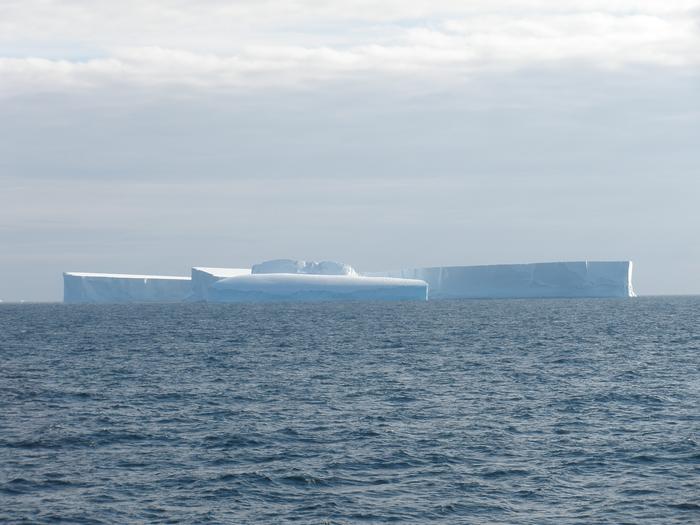Of all the polar regions, the West Antarctic Ice Sheet is the most sensitive to a warming ocean due to climate change. This is already causing a long-term ice sheet melt, and the question is how fast that melting process will take place. It may be that this enormous mass of ice already passed the tipping point, with irreversibly fast melting. This has the potential to sharply accelerate sea level rise in the near future, but the processes causing this are not yet well understood. That is why paleoclimatologists from the Faculty of Geosciences of Utrecht University have joined forces with geologists from the British Antarctic Survey (BAS), the British national institute for Antarctic research. Together, they will make reconstructions of the geological time periods with rapid global warming and fastest ice sheet melt. In doing so, they aim to better understand the underlying processes of climate-driven ice sheet melt. Did the ice sheet melt cause changes in the ocean or vice versa? And how much sea level rise is really coming our way?

Credit: Peter Bijl, Utrecht University
Of all the polar regions, the West Antarctic Ice Sheet is the most sensitive to a warming ocean due to climate change. This is already causing a long-term ice sheet melt, and the question is how fast that melting process will take place. It may be that this enormous mass of ice already passed the tipping point, with irreversibly fast melting. This has the potential to sharply accelerate sea level rise in the near future, but the processes causing this are not yet well understood. That is why paleoclimatologists from the Faculty of Geosciences of Utrecht University have joined forces with geologists from the British Antarctic Survey (BAS), the British national institute for Antarctic research. Together, they will make reconstructions of the geological time periods with rapid global warming and fastest ice sheet melt. In doing so, they aim to better understand the underlying processes of climate-driven ice sheet melt. Did the ice sheet melt cause changes in the ocean or vice versa? And how much sea level rise is really coming our way?
Using drill cores from the ocean floor near West Antarctica, the team of scientists will investigate the ice and ocean changes during two warm periods in the Pleistocene and Pliocene, 130,000 and 3,000,000 years ago, respectively. “With a better understanding of how the climate and the ocean close to the ice sheet changed through geologic time, we can better estimate how the Antarctic ice sheet and thus global sea levels will respond to current climate change in the future,” said Dr Peter Bijl, leader of the Dutch-British project. The research was made possible thanks to a cooperation agreement between the Dutch research council NWO and BAS.
Ocean floor as archive
The collaboration between the researchers from Utrecht and the United Kingdom brings together crucial and complimentary areas of expertise. Research into time periods in the past is highly dependent on the availability of drill core material: hidden deep beneath the waves lies the archive of what happened to the ocean, the ice sheet and the climate, in the form of layers of ocean floor. It contains remnants of fossil plankton, fossil molecules, and the decomposition products of the land ice. The British Antarctic Survey has been very successful in recent years in taking drill cores off the coast of the West Antarctic Ice Sheet. This has been used to collect very valuable material.
Unique expertise
In recent years, Utrecht researchers Francesca Sangiorgi and Peter Bijl, initiators of this research proposal, have developed techniques that allow them to reconstruct the ocean conditions in the Southern Ocean in detail for the geological past, using fossil plankton. “Among other things, we look at the species composition, because the presence of certain types of plankton indicates a certain seawater temperature, or specific sea ice conditions,” explains Dr Sangiorgi. This is a unique expertise that has already yielded several breakthroughs in the Antarctic and Arctic climate history. “All of that data tells us something about the range of feedbacks between ocean, ice sheet and climate over timescales from centuries to millennia,” Sangiorgi adds. “And the fact that we can work together with such a top institute as the BAS offers us great opportunities to make better climate reconstructions for the most pressing issues about the climate and sea level of the future.”
Sand and clay
The British Antarctic Survey has a long history of research in the Southern Ocean, and has unearthed many sediment cores during numerous ocean expeditions, precisely in the region of West Antarctica that is so sensitive to climate change. While Bijl and Sangiorgi can reconstruct the ocean’s past, the British researchers are experts in deducing the ice conditions. Bijl: “They do this on the basis of sedimentological measurements. The sand and clay in the drill cores are direct decomposition products of the ice sheet.”
Sustainable research
In the coming years, the team will combine their expertise on these drill cores. And the researchers are very much looking forward to that. “The collaboration really has crucial added value: individually, the reconstructions are not complete and not precise enough.” Moreover, the project also fits in perfectly with the new Dutch climate research into feedback mechanisms, in which five Dutch research institutions participate and which was recently also funded by NWO. “And, also not unimportant,” Bijl concludes, “we are going to investigate existing drill cores and therefore do not have to go to Antarctica specifically for this. This also means that our research has a limited carbon footprint.”



